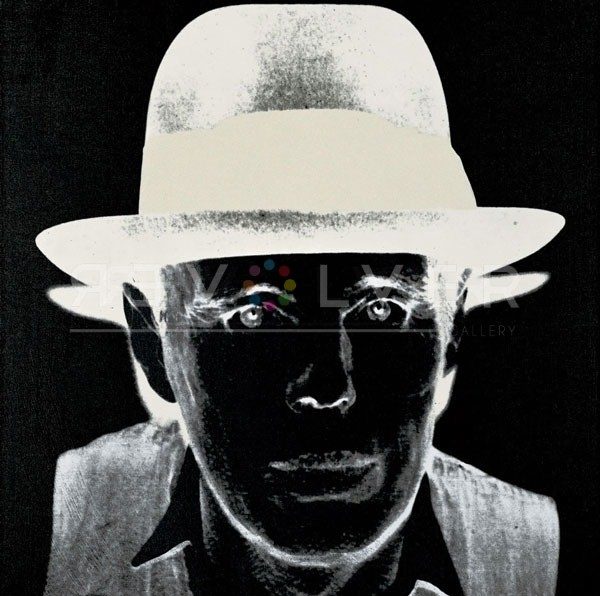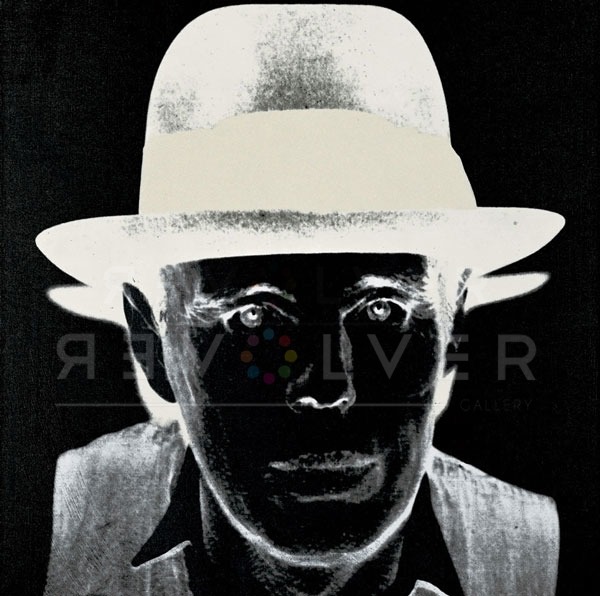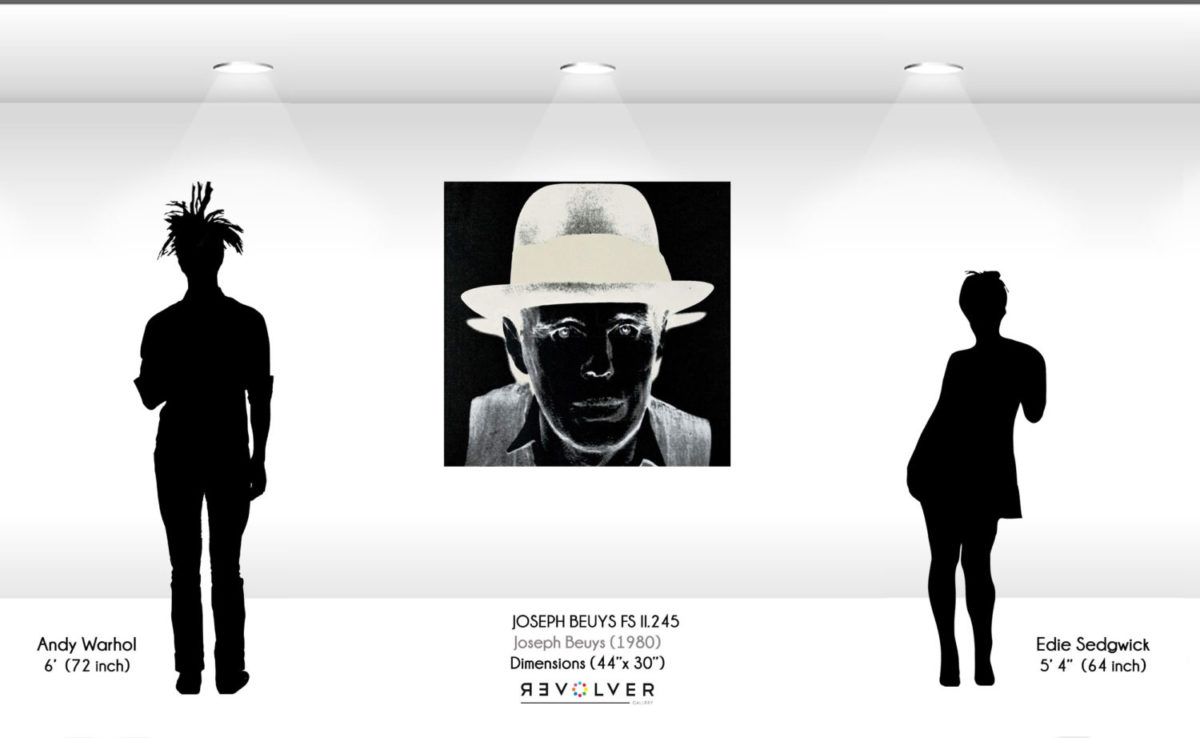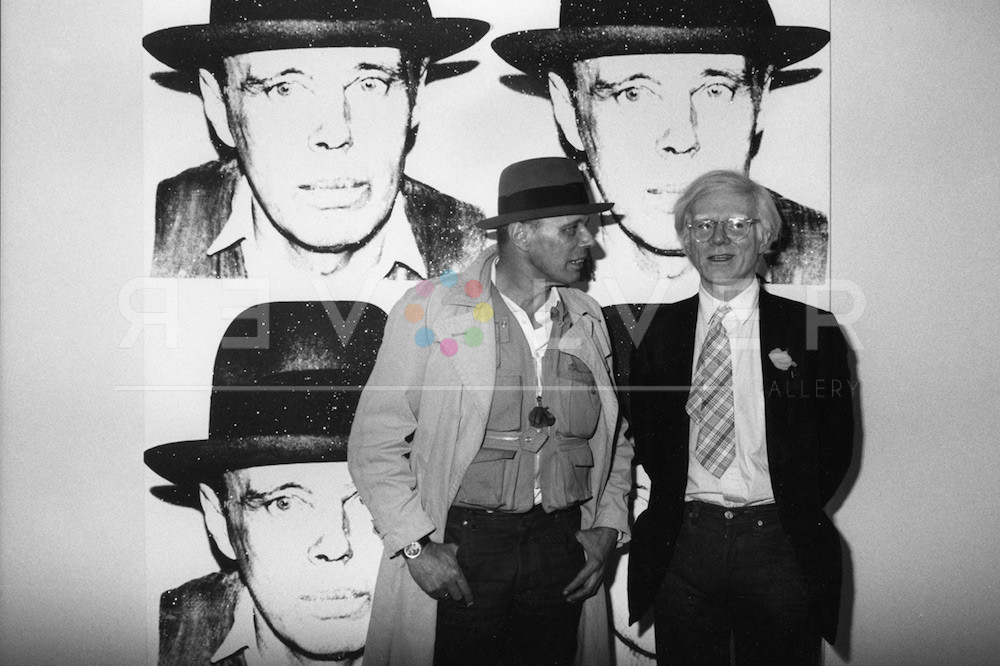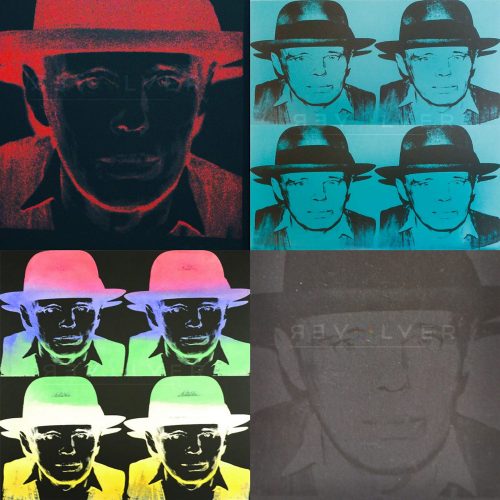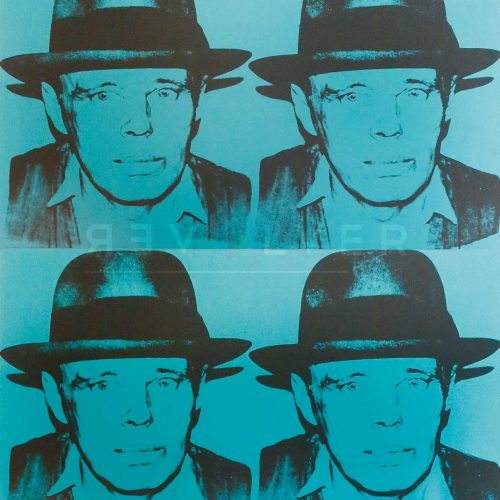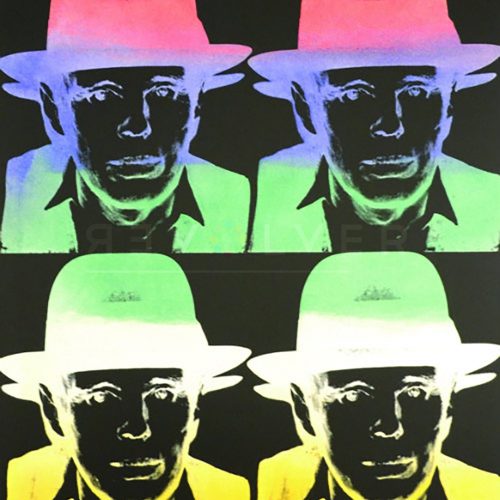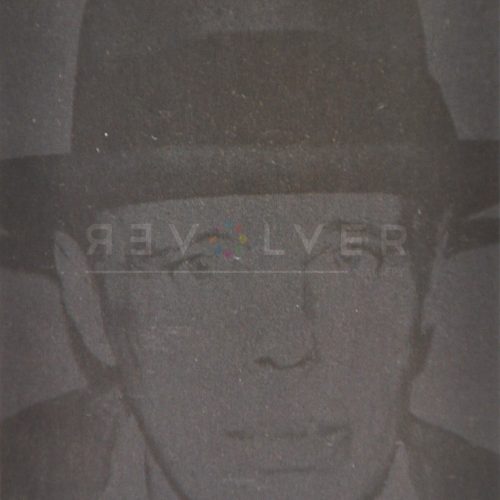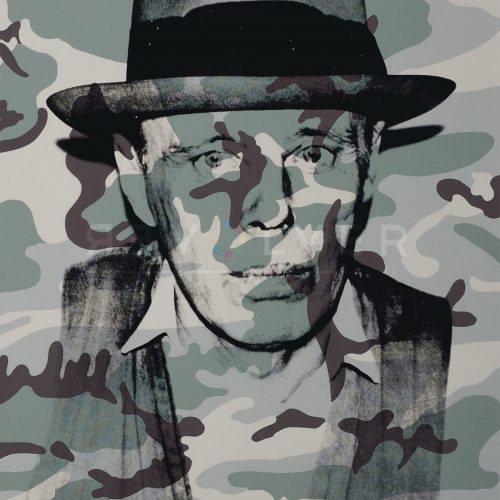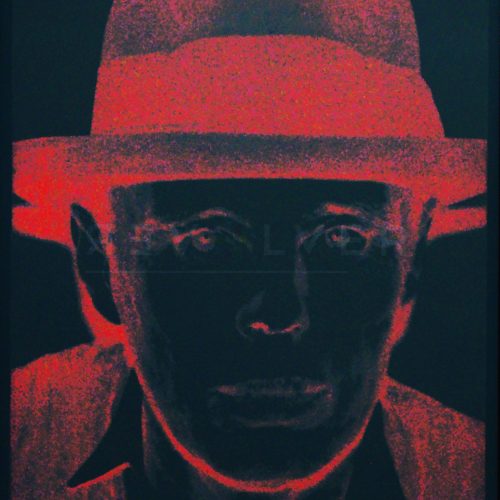Joseph Beuys 245 by Andy Warhol is a screenprint from the artist’s 1980 Joseph Beuys complete portfolio depicting the eponymous German radical art figure. The series was jointly commissioned by the Hans Meyer and Lucio Amelio Galleries of Dusseldorf and Naples, respectively. Dusseldorf was, of course, a place of importance for Beuys, who was appointed professor of sculpture at the city’s Kunstakademie or Academy of Fine arts before being dismissed for having too lax a method for admissions. Beuys was perhaps “lax” in all his methods, especially in his artistic ones, as he famously proclaimed, “everyone is an artist.” His art, too, defied boundaries, including not just things like drawings and sculptures, but activism, lectures, and performances, sometimes called “happenings.”
The creation of Joseph Beuys 245 make it clear that Warhol was fascinated by the man. It is no surprise that Warhol admired Joseph Beuys, either for his renown and controversial status or his prowess as an artist, as Warhol was always willing to champion bleeding edge talents. In fact, Warhol declared “I like the politics of Beuys. He should come to the US and be politically active there. That would be great… He should be President.” Warhol’s droll sense of humor aside, it is obvious he found something to admire in Beuys, even if their practices were dissimilar.
Joseph Beuys 245 in particular is deceptively simple in execution. Like others in the Joseph Beuys series, Warhol chose to render his subject in inverted colors, lending the work a slightly alienating presence. Printed on black paper, the white ghost of Beuys peers out at the viewer, looking like something of an apparition. To further lend an otherworldliness, Warhol incorporated diamond dust, a novelty for him at the time and a rarity in the greater catalogue of his work. A technique he possibly picked up from his preferred printer, Rupert Jasen Smith, Warhol would more famously use diamond dust on his Shoes series from the same year. In Joseph Beuys 245 and similar works, Warhol creates a novelty out of Beuys, an artist that wished to be a mystic and reach the sparkling transcendent.
Video: Joseph Beuys meets Andy Warhol (1979, at Hans Mayer gallery in Dusseldorf).
Video: Joseph Beuys – How to Explain Pictures to a Dead Hair (1965, at the Galerie Schmela in Düsseldorf).
Photo of Warhol and Beuys courtesy of Schellmannart.com.

